Hi, I’m Salik Waquas, a colorist and owner of a post-production color grading suite. Working with visual storytelling tools every day, I find myself continuously drawn to films that push the boundaries of cinematography. Apocalypse Now is one such film—a cinematic masterpiece where light, color, and composition converge to deliver an unforgettable viewing experience. As someone fascinated by the interplay between visuals and narrative, analyzing this film offers an opportunity to appreciate the craftsmanship of Vittorio Storaro, a visionary whose work on Apocalypse Now redefined the art of cinematography.
About the Cinematographer

Vittorio Storaro, ASC, AIC, is a legend in the world of cinematography, known for his profound understanding of light and color as psychological storytelling tools. Storaro’s contributions to films such as The Last Emperor and Reds have established him as one of the most influential cinematographers of all time. His work on Apocalypse Now directed by Francis Ford Coppola brings philosophical depth to the visual narrative. For Storaro, light isn’t just illumination—it’s a language. His collaboration with Coppola shaped the film into an exploration of chaos, identity, and madness, with every frame designed to evoke emotional intensity.
Inspiration for the Cinematography of Apocalypse Now

Storaro’s cinematographic choices were deeply inspired by Joseph Conrad’s Heart of Darkness, on which the film is based. Just as the novella’s journey through a river symbolizes a descent into madness, Storaro mirrored this journey visually, using shifts in light and tone to reflect the characters’ inner turmoil.
The philosophical tension between light and darkness served as the backbone of his visual storytelling. As the patrol boat moves deeper into the jungle, the lighting and colors change—early scenes have soft, natural light, while later scenes adopt muted tones and shadows, symbolizing the erosion of sanity. The unpredictable jungles of the Philippines also played a significant role in shaping the film’s aesthetics. Sudden weather changes forced Coppola and Storaro to improvise, leading to visuals that feel raw and organic, amplifying the film’s immersive quality.
Camera Movements in Apocalypse Now

Camera movement in Apocalypse Now is a masterclass in narrative intention. The fluid tracking shots following the patrol boat along the river create a hypnotic rhythm, conveying the inevitability of the characters’ journey. These smooth, deliberate shots contrast with the handheld sequences used during chaotic combat scenes, such as the iconic helicopter attack.
This blend of steadiness and instability mirrors the psychological conflict in the film—the controlled appearance of military operations versus the internal chaos experienced by the characters. The immersive long takes allow the audience to sink deeper into the narrative, while slow zooms and pans unravel moments of tension, peeling away the characters’ mental layers. Storaro’s choices emphasize that this is more than a physical war—it’s a war of the mind.
Compositions in Apocalypse Now
The compositions in Apocalypse Now are unsettling, yet strikingly symmetrical, reinforcing the film’s exploration of control and chaos. Storaro and Coppola carefully placed characters within the frame to convey emotional detachment or inner conflict. A brilliant example is Colonel Kilgore’s triumphant stance on the beach as explosions erupt behind him. The composition frames him as a man immune to the horror of war, almost as if he belongs to a surreal portrait instead of a battlefield.

Willard’s journey is marked by compositions that focus on his shadowed face, visually suggesting that he is both concealing and losing himself. Similarly, Kurtz is introduced in near darkness, hinting at his descent into moral ambiguity. The recurring use of negative space—where dense jungle foliage envelops the characters—emphasizes the insignificance of individuals against the backdrop of nature and war, intensifying the feeling of isolation.
Lighting Style of Apocalypse Now

Storaro’s mastery of chiaroscuro lighting—where light and shadow create dramatic contrasts—anchors the film’s visual language. In the early sequences, natural light bathes the scenes, creating a sense of normalcy. As the narrative progresses, the lighting becomes harsher and more symbolic, mirroring the growing sense of chaos and madness.
The climax in Kurtz’s compound is a prime example of chiaroscuro at its finest. Kurtz is often half-hidden in shadows, symbolizing his moral ambiguity and estrangement from reason. The use of firelight heightens the primal atmosphere, underscoring that Kurtz has regressed into a state governed by instinct. On the other hand, combat scenes—like the infamous napalm strike—are flooded with blinding light, overwhelming the senses and symbolizing the sheer destructive power of war.
Lensing and Blocking of Apocalypse Now
Storaro’s lens choices were pivotal in creating the immersive, dreamlike feel of the film. Wide-angle lenses capture the grandeur and menace of the jungle, making the environment feel both expansive and claustrophobic. In contrast, telephoto lenses compress the space during tense moments, like the Vietnamese boat inspection, enhancing the visual unease and reflecting Willard’s narrowing focus on his mission.

Blocking—the arrangement of actors within a scene—plays an equally significant role. Characters are often isolated in the frame, even in crowded scenes, reinforcing themes of detachment. For instance, in the USO show scene, the performers are framed as spectacle, but the disconnect between them and the soldiers is palpable, symbolizing the emotional void created by war. Similarly, the scattered followers of Kurtz reflect the disjointed nature of his influence—fragmented and chaotic.
The Role of Color in Apocalypse Now
| Genre | Drama, Military, Vietnam War, War, History, Political |
| Director | Francis Ford Coppola |
| Cinematographer | Vittorio Storaro |
| Production Designer | Dean Tavoularis |
| Costume Designer | Luster Bayless |
| Editor | Lisa Fruchtman, Gerald B. Greenberg, Walter Murch |
| Colorist | Doug Delaney |
| Time Period | 1970s |
| Color | Warm, Saturated, Orange, Yellow |
| Aspect Ratio | 2.35 – Anamorphic |
| Format | Film – 35mm |
| Lighting | Hard light, High contrast |
| Lighting Type | Daylight, Overcast, Artificial light, Practical light, Firelight |
| Story Location | Asia > Vietnam |
| Filming Location | Asia > Philippines |
| Camera | Mitchell BNCR |
| Lens | Todd-AO Anamorphics (1980’s) |
| Film Stock / Resolution | 5247/7247 Vision 125T |

Color in Apocalypse Now isn’t just aesthetic—it’s deeply symbolic. The journey begins with lush greens and earthy tones, evoking life and vitality. As the film progresses, the palette shifts toward muted browns, grays, and eerie reds, signifying decay, destruction, and madness. The use of red is especially noteworthy—appearing during moments of violence and emotional intensity, such as the napalm attack and Kurtz’s final moments, it symbolizes rage, danger, and moral collapse.

The draining of color as Willard approaches Kurtz visually represents the erosion of rationality. By the time Willard reaches his target, the world is devoid of clear distinctions—right and wrong blur into shades of ambiguity, reflected by desaturated tones. This gradual shift in color also serves as a subtle commentary on the Vietnam War, suggesting that the moral clarity initially promised has faded, leaving only disillusionment and chaos.
Apocalypse Now Film Stills
A curated reference archive of cinematography stills from Apocalypse Now. Study the lighting, color grading, and composition.
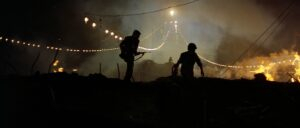
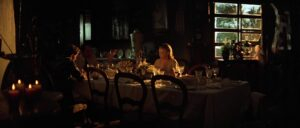
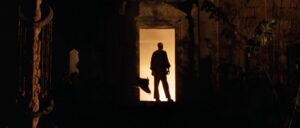

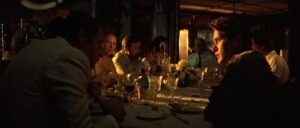
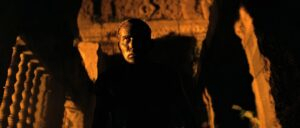
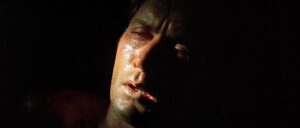

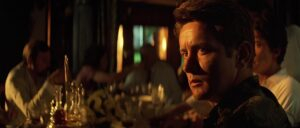
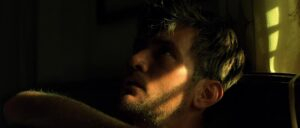
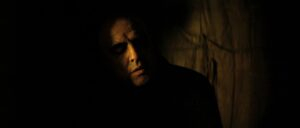


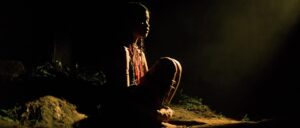
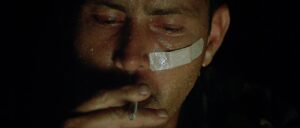


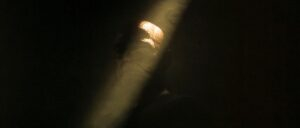
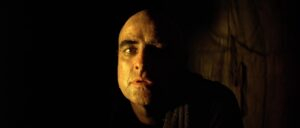

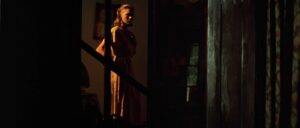


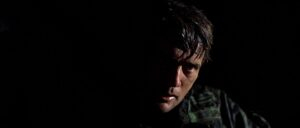

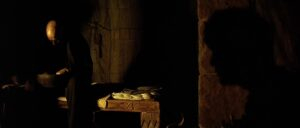
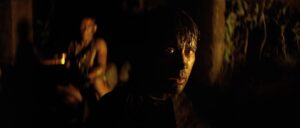

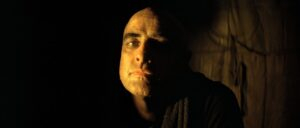
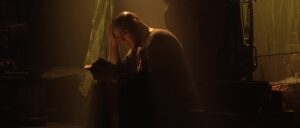

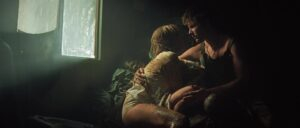
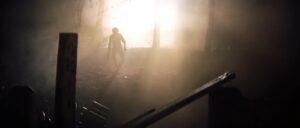
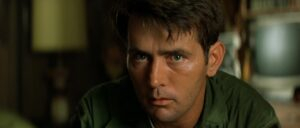
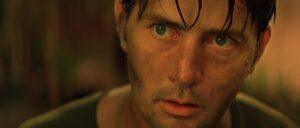

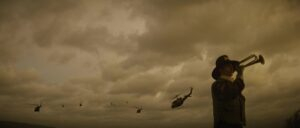
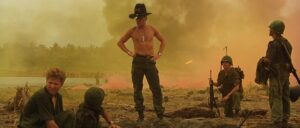


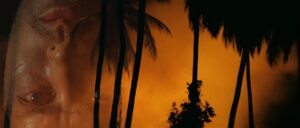
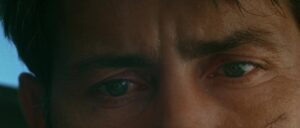
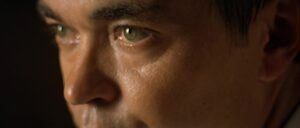
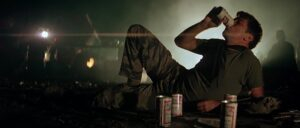


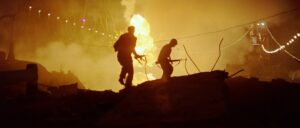



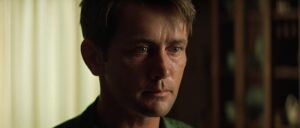
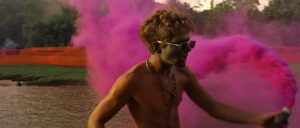
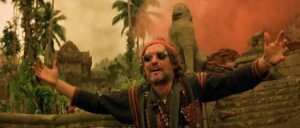





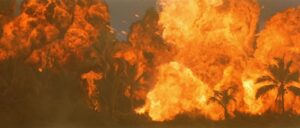

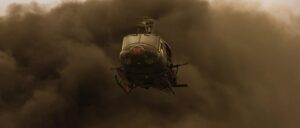


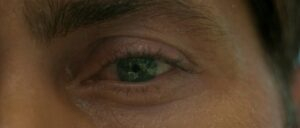
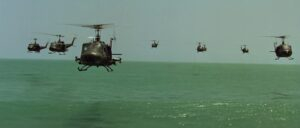



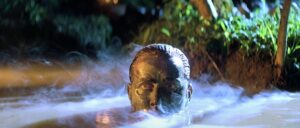


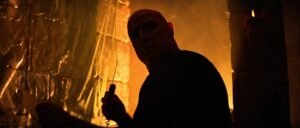
Conclusion
In my opinion, Storaro’s work in Apocalypse Now exemplifies how cinematography can transcend technical brilliance to become a form of visual poetry. His collaboration with Coppola resulted in a film that lingers long after the credits roll—a testament to the power of visual storytelling. As a colorist, studying this masterpiece reaffirms my belief in the importance of every visual element in conveying emotion and meaning.
- Also Read: BIRDMAN CINEMATOGRAPHY ANALYSIS (IN DEPTH)
- Also Read: CINEMATOGRAPHY ANALYSIS OF CHUNGKING EXPRESS (IN DEPTH)
Browse Our Cinematography Analysis Glossary
Explore directors, cinematographers, cameras, lenses, lighting styles, genres, and the visual techniques that shape iconic films.
Explore Glossary →